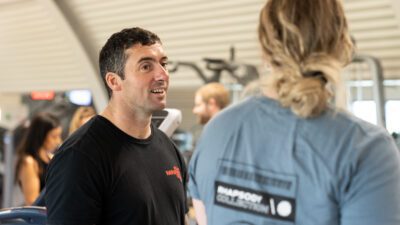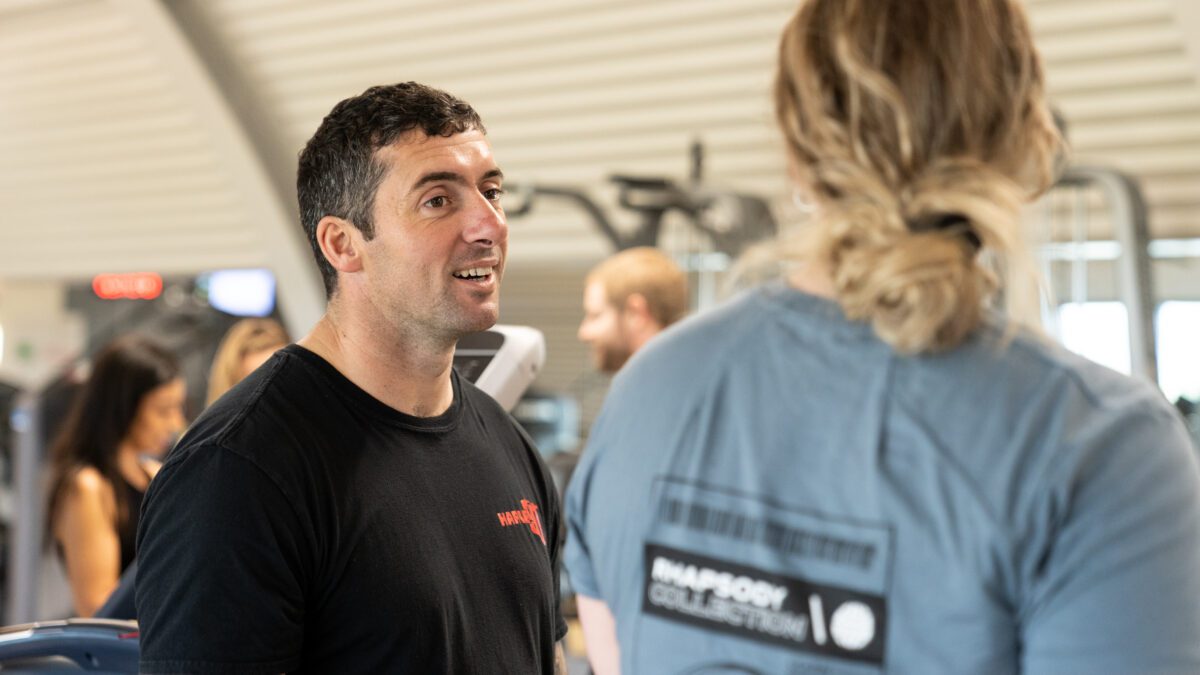



Being able to train clients at the gym or in a fitness environment is something that many of you will have been looking forward to all year. Having access to specific equipment and being back in the routine of working out clients in a competitive but supportive environment will signal a return to normality for your training business.
There are, however, still many regulations to consider and we want to make sure you are returning to 1-2-1 indoor training safely, with the right knowledge and skills.
This article sets out some practical steps of how one-to-one exercise sessions can be delivered safely by a personal trainer whilst mitigating the COVID-19 risk.
In This Article:
One of the most significant challenges of returning to 1-2-1 indoor training will be to adhere to social distancing guidance while still being close by and ready to assist their clients if they need to.
The best way to avoid unnecessary close contact with clients is to pre-plan and adapt exercises to rely on vocal cues and demonstrations rather than physical assistance. For example:
Any Personal Trainer will want to jump in and spot their client to ensure safe exercise, but this needs to be done while adhering to social distancing guidelines.
The solution here is to minimise any occurrence where spotting might be necessary. Swapping barbells for dumbbells on exercises like bench presses and squats is a great way to limit the need for spotting. Our PT Master Trainer, Mark Laws, suggested the following swaps:
Clients can also lower their usual load if spotting is unavailable, and make the lower body work more complicated to balance the reduced work on the top (for example, performing a single leg movement). If they want to push themselves, however, they could swap to one-arm versions of the exercises – lifting the same amount of weight but using their other hand to protect their face.
Personal trainers should always be getting involved and supporting where they can. Whether it be:
Carefully consider which exercises you select to avoid any that need hands-on assistance. You may wish to record demo videos to send to clients, or talk them through the training in more detail, highlighting areas that may need adjusting/stretching more.
An essential practical measure we can all take to minimise the spread of COVID-19 is to clean and disinfect anything we touch or drip sweat on.
Although it is already common practice to wipe down equipment after use, extra effort must be taken to disinfect all touchpoints.
This includes:
Even when a client and personal trainer touch small equipment, such as kettlebells, medicine balls and exercise mats, quick disinfecting will be required.
You should also avoid clients needing to share equipment (unless they are training with a member of their household). As well as maintaining social distancing and limiting physical contact while exercising your client, you should also avoid touching your face.
To prepare yourself for getting back to in-person training, we encourage you to complete your ReActivate training. The training is currently free and will give you the essential skills and knowledge you need for your peace of mind and to assure clients you are the best person to begin 1-2-1 training. The training takes as little as 4-6 hours and can be completed 100% online, allowing you to fit the training around your existing commitments.
This course is for anyone in the fitness industry, from club
managers to volunteers, and teaches you fundamental skills, such as:
You can sign up for your training here.
Equally, once you return to in-person training, you may have clients who have survived COVID-19 and need extra support with returning to exercise. We also encourage you to complete our online COVID-19 Rehabilitation course, giving you the skills and knowledge of:
You can find out more about this course, and book your place here.
We are so excited to welcome clients back through the gym doors and return to helping the community hit their fitness goals in an environment we all know and love. Ensure you are always keeping up with the latest changes to your relevant government guidelines surrounding rules to social distancing and fitness.
Keeping up with your CPD training and giving yourself the confidence to train clients in this “new normal” will also set you up for success